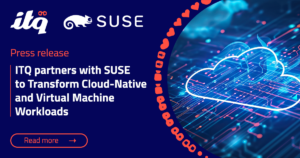Over the past year, my colleague and End User Computing specialist Johan van Amersfoort wrote blogs about the developing proposition of the Horizon suite. With blogs about Horizon 6 (dutch), AppVolumes and Project Fargo he followed the journey of VMware to create a complete Workspace Environment Management (WEM) solution.
In my humble opinion a successful WEM solution consists of three things:
- App Delivery and Isolation – Deliver and manage applications in real-time, while reducing storage costs.
- End-to-End Monitoring – Better user experience with proactive alerts and metrics.
- User Persona and Dynamic IT policies – Simplified profile and policy management with personalized access across devices and locations for end-users.
The first two were already covered by VMware with the acquirement of CloudVolumes (now AppVolumes) and their own product vRealize Operations. With the acquirement of Immidio and their flagship product Flex+, the proposition of the Horizon suite as WEM solution is complete.
With this blog I would like to zoom in on the User Persona and Dynamic IT policies part, otherwise known as User Environment Management (UEM), and the VMware solution by the same name (former Immidio Flex+).
Our experience teaches us that customers are all dealing with similar problems when involved with VDI. They can be brought down to three main “problem trends”:
- The profile and policy management is too complex (and a management burden due to problems like corrupt profiles);
- An inconsistent user experience;
- Limited possibilities to scale without an exponential growth of cost.
With workloads that come from a cloud, a physical or a virtualized platform that needs to give the same experience on mobile, tablet, desktop or laptop for numerous types of users makes User Management very complex these days. Changes and growth will result in rising operational costs and efforts.
VMware UEM is a great solution to the challenges many of our customers have within their growing VDI environment. Since I’m not technically schooled (nor experienced) at all, I will try to explain how VMware UEM works in a language, hopefully, everyone as non-technical as me can understand.
I would like to make a comparison with cars and driving to make everything clear. Think about your company as a family: you, your partner and three daughters. You have multiple cars on the driveway. Just like the flexible workspaces in your company, everyone in your family uses every car in the driveway. Finally, let’s say you are the one monitoring the cars and their usage.
Problems
You like to use the biggest car in the driveway, but every time one of your daughters takes it for a drive, you need to drive another car. When you get in, you need to adjust everything (seats, mirrors, radio channel, etc.). This takes time and you are probably in a hurry. These adjustments take away from your productivity. Additionally, there are a lot of other irritations:
- One of your daughters complains about the climate control in each car that is set on a very low or very high temperature (inconsistent user experience).
- One of your daughters doesn’t wear a seatbelt (not according to compliance rules).
- While using your navigation system, you need to scroll through all street addresses in the world (no dynamic adaption to, for example, printers).
- There is a new radio channel; now you need to change the preferences of each indiviual car radio (adjustments to your environment).
Solutions
With VMware UEM, you have a solution for all these inconvenient situations. It’s like giving everyone a personal key that has access to all the cars. The key has a memory: every adjustment you, your partner or daughters make with this key, can be remembered.
“Can”? Yes “can”. It is possible to force settings to a car, for instance for the daughter that doesn’t wear a seatbelt. Every time she starts the car, the seatbelt is to be put on and can’t be removed until she turns the engine off. Settings like radio volume can be partly forced; you can adjust them, but every time you turn off the engine, the volume is restored to the original setting. This way, users will automatically follow the compliance rules.
All settings that aren’t forced (mirrors, seat position and favorite radio channel) are saved to your personal preference on your car key with memory. So when you get in another car, all your settings are automatically set just as you left them in the car you drove before, so your mirror and seats are always tailored to you. This creates a consistent user experience.
The great thing about VMware UEM is that you get a short log-in time. You don’t have to wait for all the mirrors to be adjusted before driving away. VMware UEM loads the settings just before you start an application. This is like your mirror adjusting right before you look into it.
VMware UEM also recognizes where you are. That way only the street names (read: printers) of the country you’re in are loaded. That way, if you are on the first floor, you only see the printers on that floor. Even cooler: if you are in the Netherlands, your grammar control can be automatically set to Dutch!
The last problem we need to tackle is how to make adjustments your environment (application). As an administrator you can start a recording, add the radio station and adjust the settings just as you want them to be. When closing the recording, VMware UEM uses it to adjust the settings automatically for the users and devices you select.
Demonstration
Now, enough about cars. If you don’t own a car or daughters or I got you excited and you want to hear the technical explanation: join one of our WebEx demonstrations! This way you will get a free and complete introduction to VMware UEM. It will only take you 60 minutes. Afterwards, we will help to see if there is a business case for your company.
Take a look at our agenda to view the demonstration dates and register!

